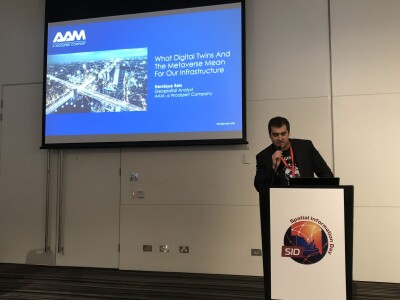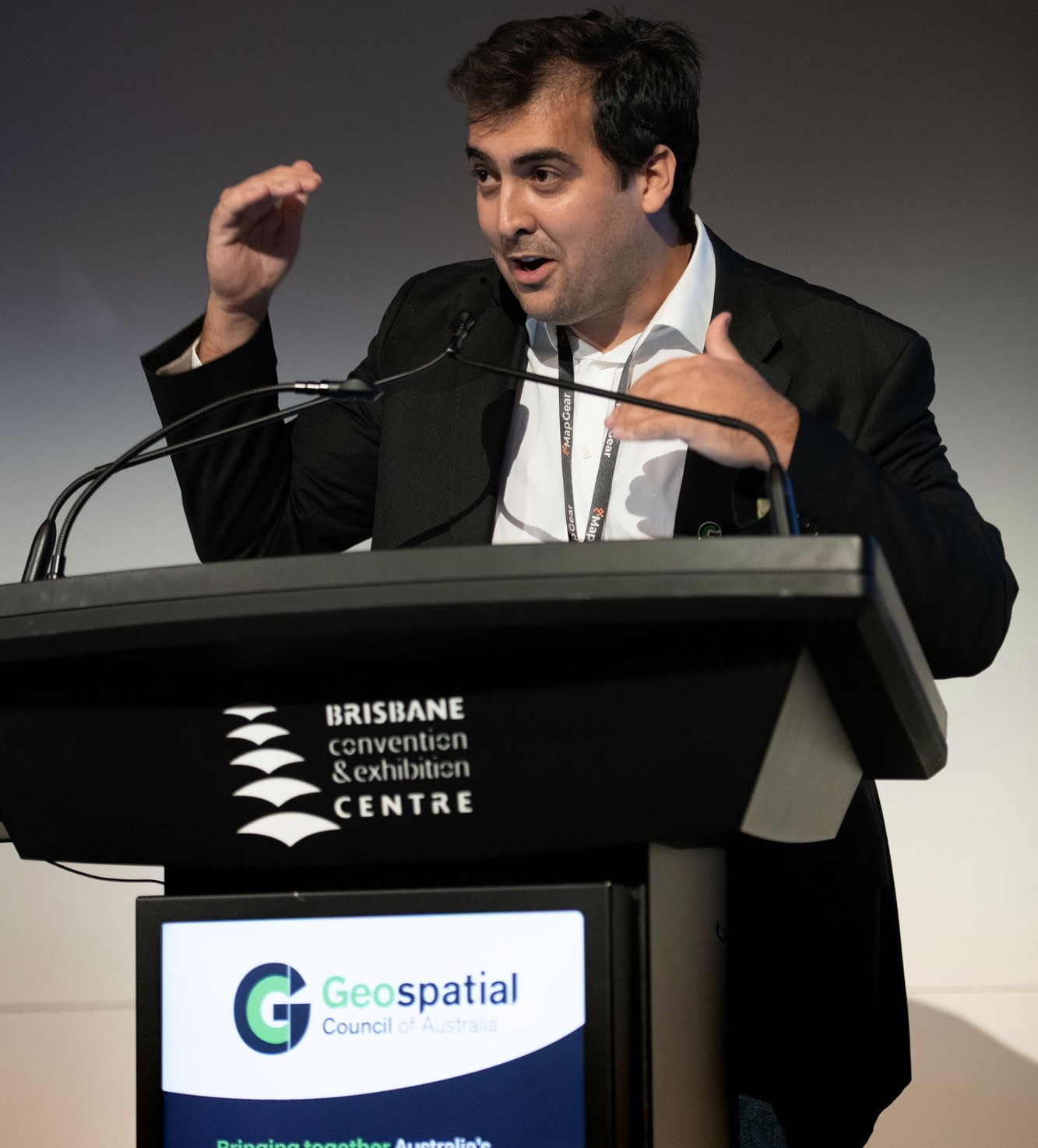More and more Building Information Modelling (BIM) is being built, moving towards parallel digital world to move from object-based 3D modelling, building structured datasets with the real world. The technology that propagates through the command of the physical world makes us understand different environments: smart neighbourhoods, cities, and countries where massive digital twins mirror physical reality. Thus, internet operates all emerging tools to help people create 3D environments and experiences in the digital world.
Digital Twins for utilities
Digital twins are among the most valuable tools to help understand and manage infrastructure to achieve solutions using the integration of many different complex systems into one. The connections between the digital world and the physical world to generate insights related to understanding the flow of data to make better decisions.
Updates intelligently and easily contribute to accurately presenting this information in geospatial positioning. The geospatial industry has made powerful analysis for management using spatial data with advanced geospatial technology, contributing to better decision support to analyze resources and costs, identify key trends and develop more proactive strategies to create smart spaces to provide quality of life and services to citizens.
To assist in city management and planning, digital twin can help city leaders quickly solve the problem of infrastructure system to improve operational, maintenance efficiency and save cost. Each city has a variety of management components powered by artificial intelligence (AI) has increased significantly in the geospatial industry it can reach a huge amount of data in the autonomous aerial classification technology that helps deliver predictive information to provide users with a 3D representation.
Every industry, whether transportation, utilities, logistics or manufacturing, is facing its own set of challenges when it comes to digital transformation. Data is at the heart of how to collect it with Internet of Things (IoT) devices as electricity, gas, steam and air-conditioning, water supply and waste management, retail and wholesale, transportation, and storage, establish universal standards and models to create more interoperability between systems and devices.
However, there is challenge of data sharing, with all its complexities, is a confronted: how to create cooperative data ecosystems capable of bring together data from heterogeneous sources and allow different parties to share?
With the correct permissions and agreement from each owner of the digital twin data, it can interact with other digital twins to securely exchange data. Interacting with data being reused in a variety of ways offers benefits as the data ecosystem evolves. It can be concluded that the challenges of digital transformation, in all sectors, having the ability to collect and share data is critical for improvement.
What is Metaverse?
Metaverse is an extension of the "real" virtual world which is a complete simulation and mirror of the real world. Metaverse allows people to have real time interactions across distance to immersive experience for new business opportunity and entertainment in virtual worlds managed by real people.
Digital transformation is in the Web3 of adaptation to the digital world and its interactions becoming perceptible and real as in the physical world. The possibilities of the metaverse are endless, as it is possible to instantly move to a virtual representation of a place in the real world as well as in more inaccessible areas contributing to breaking down geographic and financial barriers.
Therefore, the metaverse aims at the interoperability of open information standards between different platforms and systems. A new digital behaviour to achieve the freedom to display information from different resources in the same cooperative ecosystem in a virtual space.
Such virtual experiences would be a catapult to reproduce the digital experience equal to the physical experience, take advantage to create something unique and totally new through the digital twins. With this expands the opportunities for assets form a gateway for brands in the metaverse of expanding brands to leverage their product.
By collecting real-time data and gaining insights into how people move and behave, we can make data-driven decisions about how changing our infrastructure is critical to building an infrastructure that supports future generations. The spaces of the metaverse will be interconnected, allowing users to cross between them.
Digital Twins & Metaverse
Collaboration across the infrastructure industry and investors is key to building smarter, more sustainable infrastructure. The early signs are that digital twins themselves will move forward massively, and to a degree, they are already doing allow for the simulation or monitoring of alternatives as the basis for faster, more informed, and more reliable decision-making. When we collaborate, across boundaries, we can do amazing things it’s possible to make better business decisions that drive better economic, social, and environmental outcomes.
This vision of an interconnected digital twinning of the built environment will have strong public-private digital twins that can facilitate the creation of model buildings or standard operations and management protocol. To model scenarios that address sustainability and mobility to improve operational efficiency and generate positive community outcomes in public welfare, education, security, and economic development.
This precise fusion of the virtual world into the real world in a cross-platform environment and the ability to demonstrate a variety of realistic environments. Providing production efficiency for the manufacturer to leverage virtual simulation to make better business decisions and generate the highest return on investment.
Decentralization is everything that is moving the ecosystem towards a distributed and more democratized structure, having an immersive 3D environment is a more intuitive and productive way to communicate exchanges of information and ideas. Metaverse holds promise for revolutionizing everything by being a massively sized and interoperable network of 3D virtual worlds rendered in real time. Open to being synchronously and persistently experienced by an effectively unlimited number of users with a sense of individual presence and data continuity.
Conclusion
The Digital Twin is a key player in the world of digitisation and a vehicle to help to improvement by learning, sharing experiences, driving innovation, developing expertise to advancing the digital twins movement. It identifies good practice, develops guidance, and shapes standards on data sharing as well as showcasing the benefits of collaborative, connected digital twins to develop solutions that help tackle the climate crisis to ensure a more sustainable future that is in focus by many organizations and governments around the world.
Connecting to real-world interoperability is presented as a key point for the development of a Building Information Modelling (BIM), for the open and non-proprietary system of file exchange in the construction and infrastructure sector. Massive transformation in devices of many different levels, company, technologies, economy.
The metaverse is highly relevant for digital twins in urban contexts, as the use of digital twins in the metaverse would bring greater expansions of communication and consequent benefits for society and nature. From how to manage infrastructure and systems to serve people, different services such as: energy, water, transport, to being able to intervene more effectively and connected with digital twins to serve citizens due to challenges at the systems level.
 About the author: Henrique Reis is a 3D Geospatial Analyst at AAM, a Woolpert company. Henrique is a skilled analyst in Geographic Information Systems (GIS) with spatial data information to be managed for rehabilitation strategies to be monitored by companies. For him, being part of this major digital transformation is an immeasurable and unique experience.
About the author: Henrique Reis is a 3D Geospatial Analyst at AAM, a Woolpert company. Henrique is a skilled analyst in Geographic Information Systems (GIS) with spatial data information to be managed for rehabilitation strategies to be monitored by companies. For him, being part of this major digital transformation is an immeasurable and unique experience.






